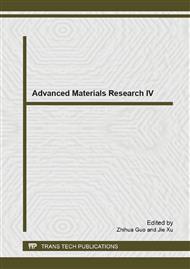p.182
p.186
p.192
p.201
p.206
p.212
p.217
p.222
p.227
Effect of Stretching during Welding Process on the Weldability of Dissimillar Metals Resistance Spot Welded between Carbon Steel and Low Nickel Stainless Steel
Abstract:
Due to the local heating of welding, deformation will occur on the welding structure. To mitigate this deformation, the method called stretching technology was proposed by previous study. In this method, plate was stretched to certain pre-strain, kept in this condition and then welded to another sheet. It can reduce the welding deformation significantly. However, pre-strain will change the properties of joined materials and lead different behavior of welded materials. It will be complicated if dissimilar metals are welded due to different physical and metallurgical properties. Carbon steel SS400 with the thickness of 3.0 mm and 1.0 mm thick-low nickel stainless steel were welded using resistance spot welding (RSW) process with constant electrode pressure and weld time of 6 kN and 5 second respectively. During welding process, low nickel stainless steel was stretched in four different levels pre-strain of 0%, 1%, 1.5% and 2%. Welding current were varied in the range from 3.02 to 4.20 kA. Microstructure investigations and tensile-shear tests were conducted to evaluate the weldability of RSW joint. Generally, stretching during welding process decreased the fussion zone area of RSW joint. In the low welding current, there is no fussion in the interface of stretched plate, but fussion still occured in the interface of unstretched plate. In all levels of welding current, stretching during welding decreased fussion zone area and led to decrease tensile-shear load bearing capacity of RSW joint.
Info:
Periodical:
Pages:
206-211
Citation:
Online since:
February 2014
Authors:
Price:
Сopyright:
© 2014 Trans Tech Publications Ltd. All Rights Reserved
Share:
Citation:


